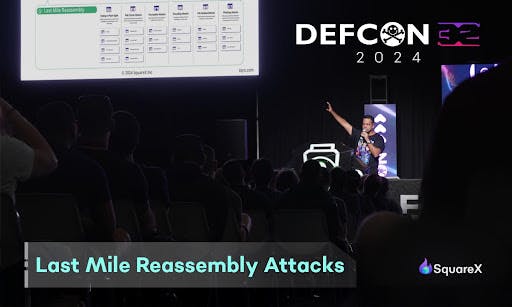Palo Alto, California, September 18th, 2025/CyberNewsWire/-
As more attackers are leveraging Last Mile Reassembly techniques to exploit enterprises, SASE/SSE vendors are beginning to recognize that proxy solutions are no longer sufficient to protect against browser based attacks, with Palo Alto Networks being the first to publicly acknowledge that Secure Web Gateways are architecturally unable to defend against Last Mile Reassembly attacks.
In the
press release , Palo Alto Networks recognized the attack as "encrypted, evasive attacks that assemble inside the browser and bypass traditional secure web gateways.” The release also recognized that “the browser is becoming the new operating system for the enterprise, the primary interface for AI and cloud applications. Securing it is not optional.”
This marks a watershed moment in cybersecurity where a major incumbent SASE/SSE vendor publicly admits the fundamental limitations of Secure Web Gateways (SWGs) and acknowledges the critical importance of browser-native security solutions - exactly what SquareX has been advocating since pioneering this research.
What are Last Mile Reassembly Attacks?
Last Mile Reassembly attacks are a class of techniques that exploit architectural limitations of SWGs to smuggle malicious files through the proxy layer, only to be reassembled as functional malware in the victim’s browser. In one technique, attackers break the malware into different chunks. Individually, none of these chunks trigger a detection by SWGs. Once they bypass proxy inspection, the malware is then reassembled in the browser.
In another example, attackers smuggle these malicious files via binary channels like WebRTC, gRPC and WebSockets. These are common communication channels used by web apps like video conferencing and streaming tools, but are completely unmonitored by SWGs. In fact, many SWGs publicly admit this on their website and recommend their customers disable these channels.
In total, there are over 20 such techniques that completely bypass SWGs. While Palo Alto Networks is the first to publicly admit this limitation, SquareX has demonstrated that all major SASE/SSE vendors are vulnerable and have been in touch with multiple solutions as part of responsible disclosures and to discuss alternative protection mechanisms.
Data Splicing Attacks: Exfiltrating Data with Last Mile Reassembly Techniques
Since the discovery of Last Mile Reassembly Attacks, SquareX’s research team conducted further research to see how attackers can leverage these techniques to steal sensitive data. At BSides San Francisco this year, SquareX’s talk on
The Year of Browser Bugs: Pioneering Critical Browser Security Research
As the browser becomes one of the most common initial access points for attackers, browser security research plays a critical role in understanding and defending against bleeding edge browser-based attacks. Inspired by the impact of Last Mile Reassembly, SquareX launched a research project called
“Research has always been a core part of SquareX’s DNA. We believe that the only way to defend against bleeding edge attacks is to be one step ahead of attackers. In the past year alone, we’ve discovered over 10 zero day vulnerabilities in the browser, many of which we disclosed at major conferences like DEF CON and Black Hat due to the major threat it poses to organizations,” says
Vivek Ramachandran , the Founder of SquareX,
“Palo Alto Networks’ recognition of Last Mile Reassembly attacks represents a major shift in incumbent perspectives on browser security. At SquareX, research has continued to inform how we build browser-native defenses, allowing us to protect our customers against Last Mile Reassembly attacks and other novel browser-native attacks even before we disclosed the attack last year.”
As part of their mission to further browser security education, SquareX collaborated with CISOs from major enterprises like Campbell’s and Arista Networks to write
Fair Use Disclaimer
This site may contain copyrighted materials (including but not limited to the recent
About SquareX
Contact
Head of PR
Junice Liew
SquareX
This story was published as a press release by Cybernewswire under HackerNoon’s Business Blogging


